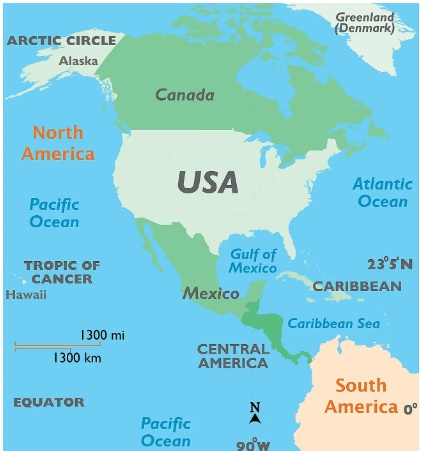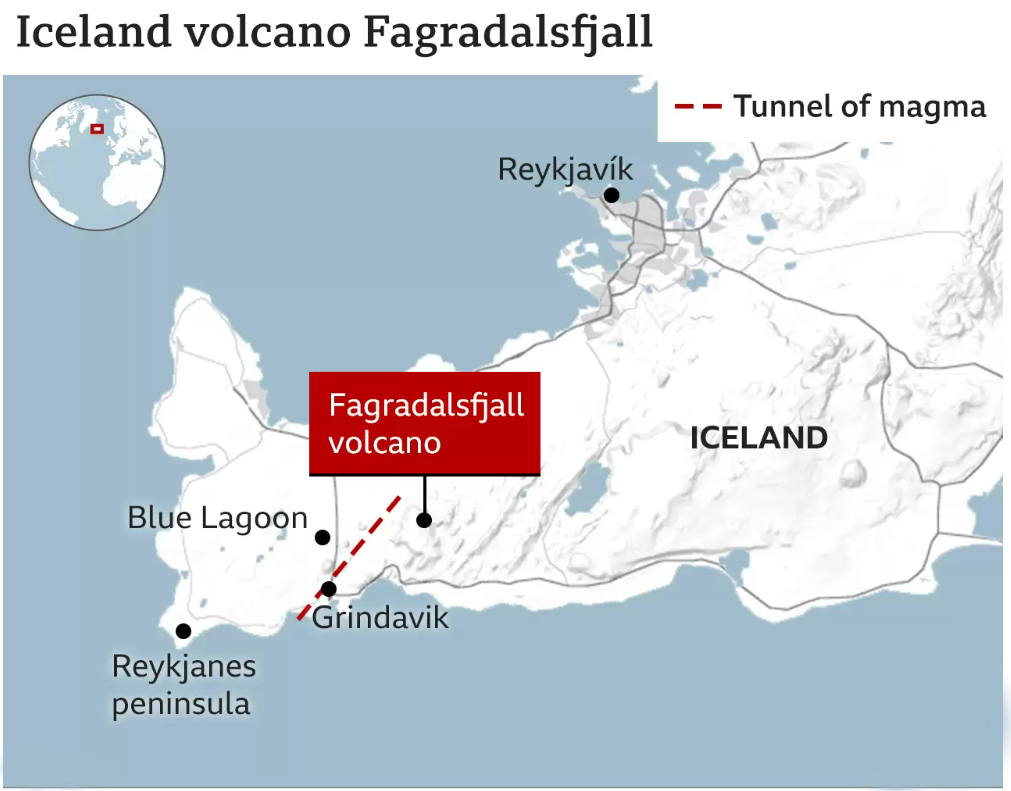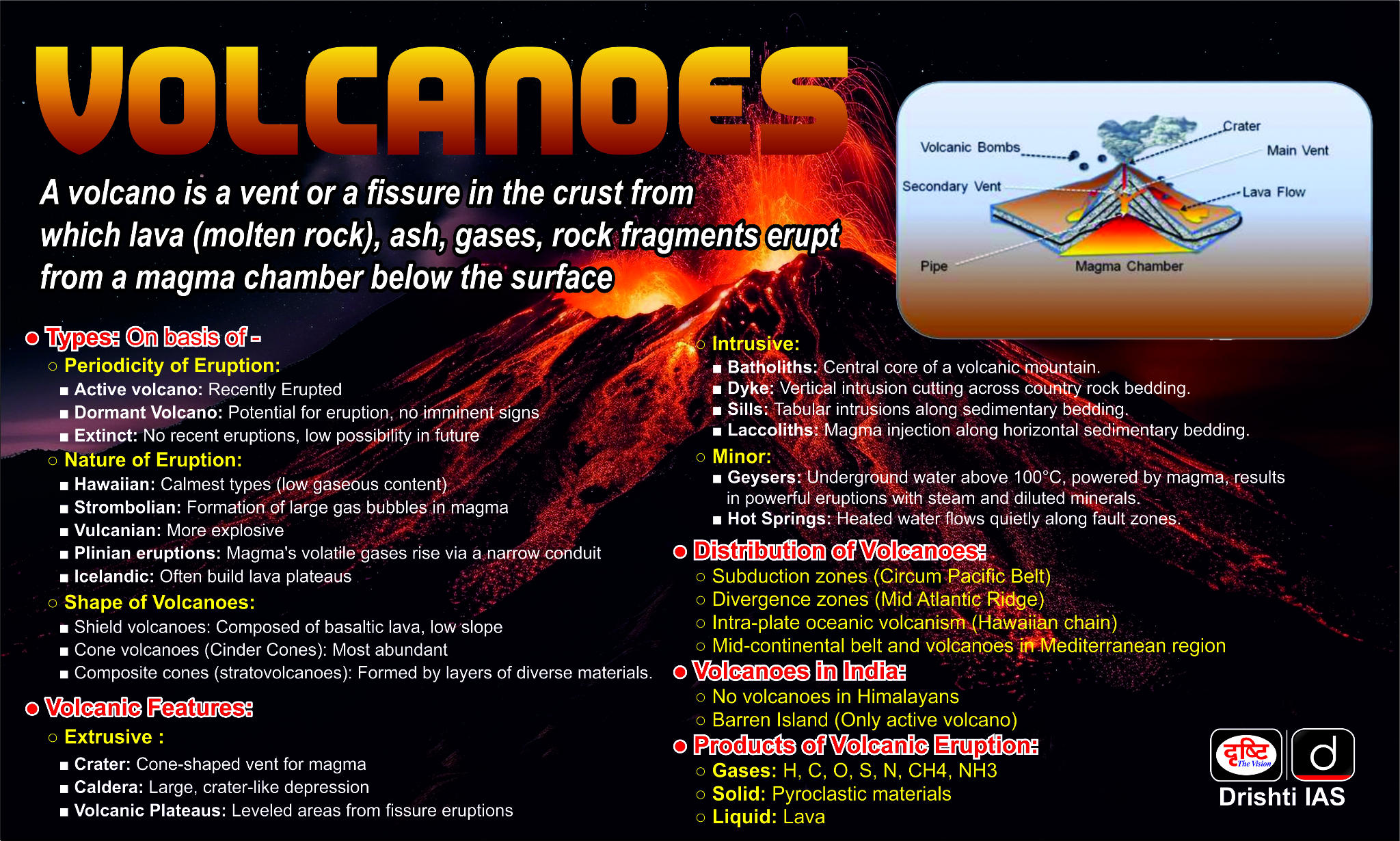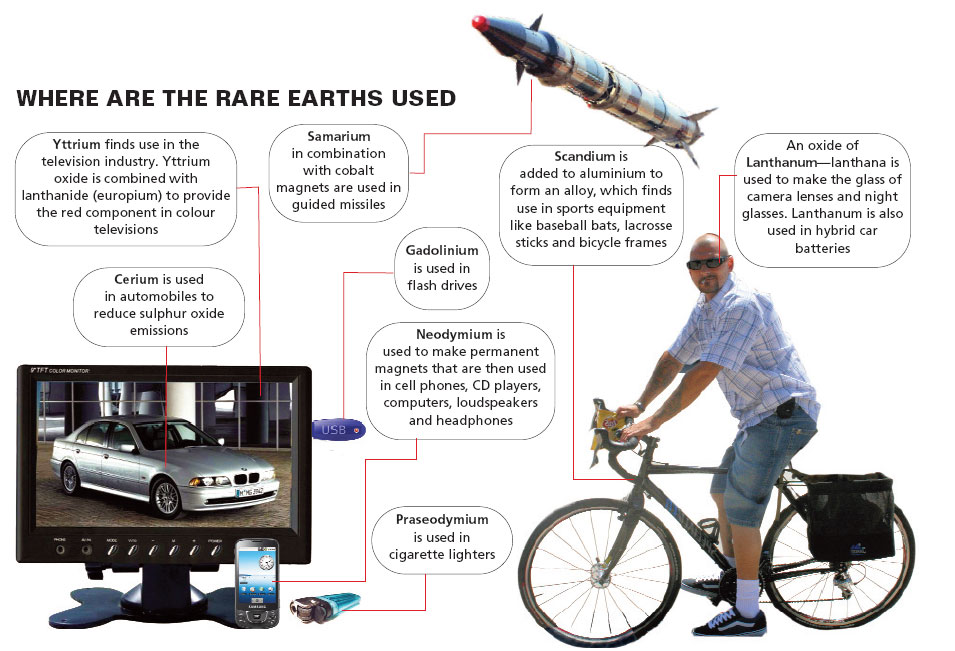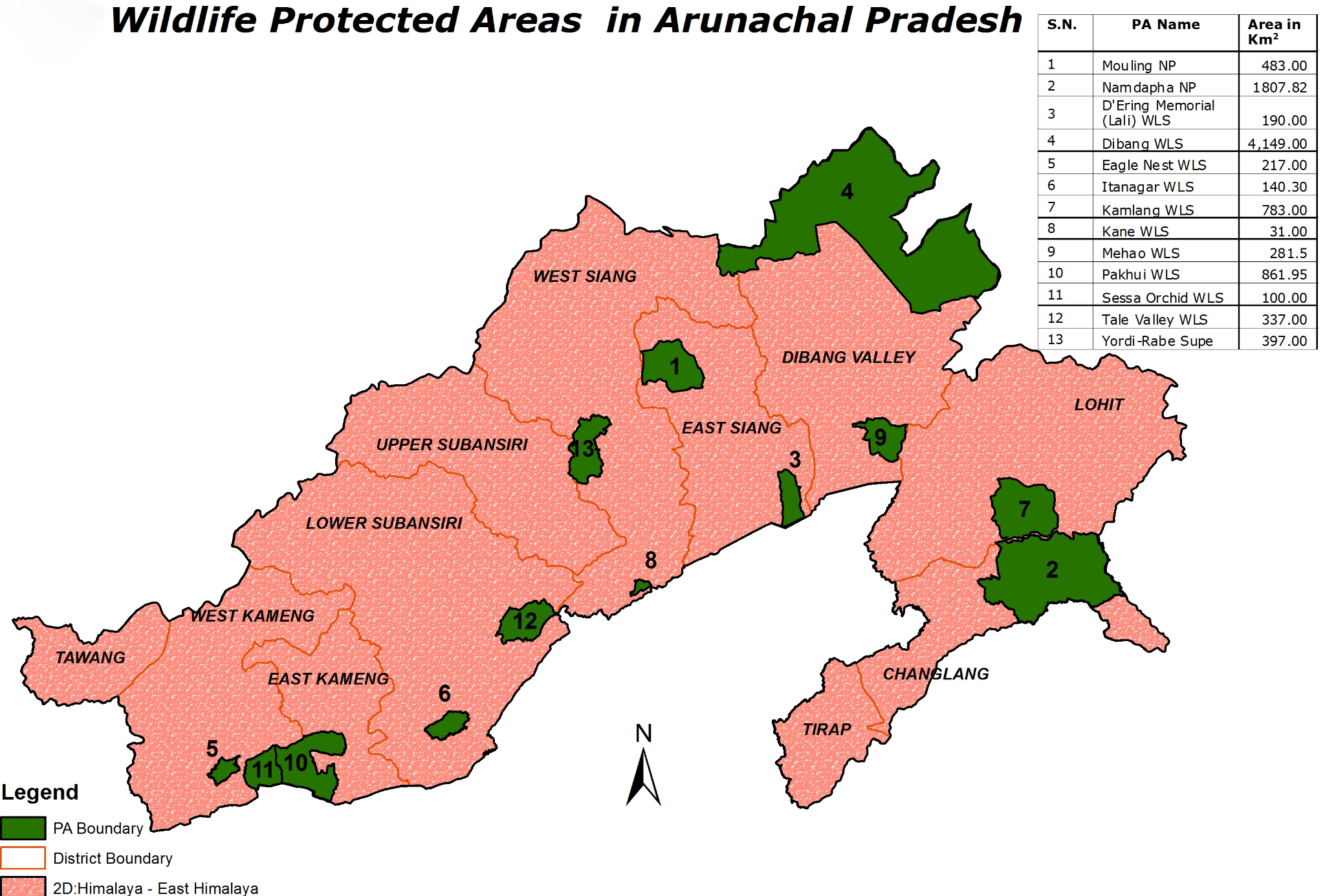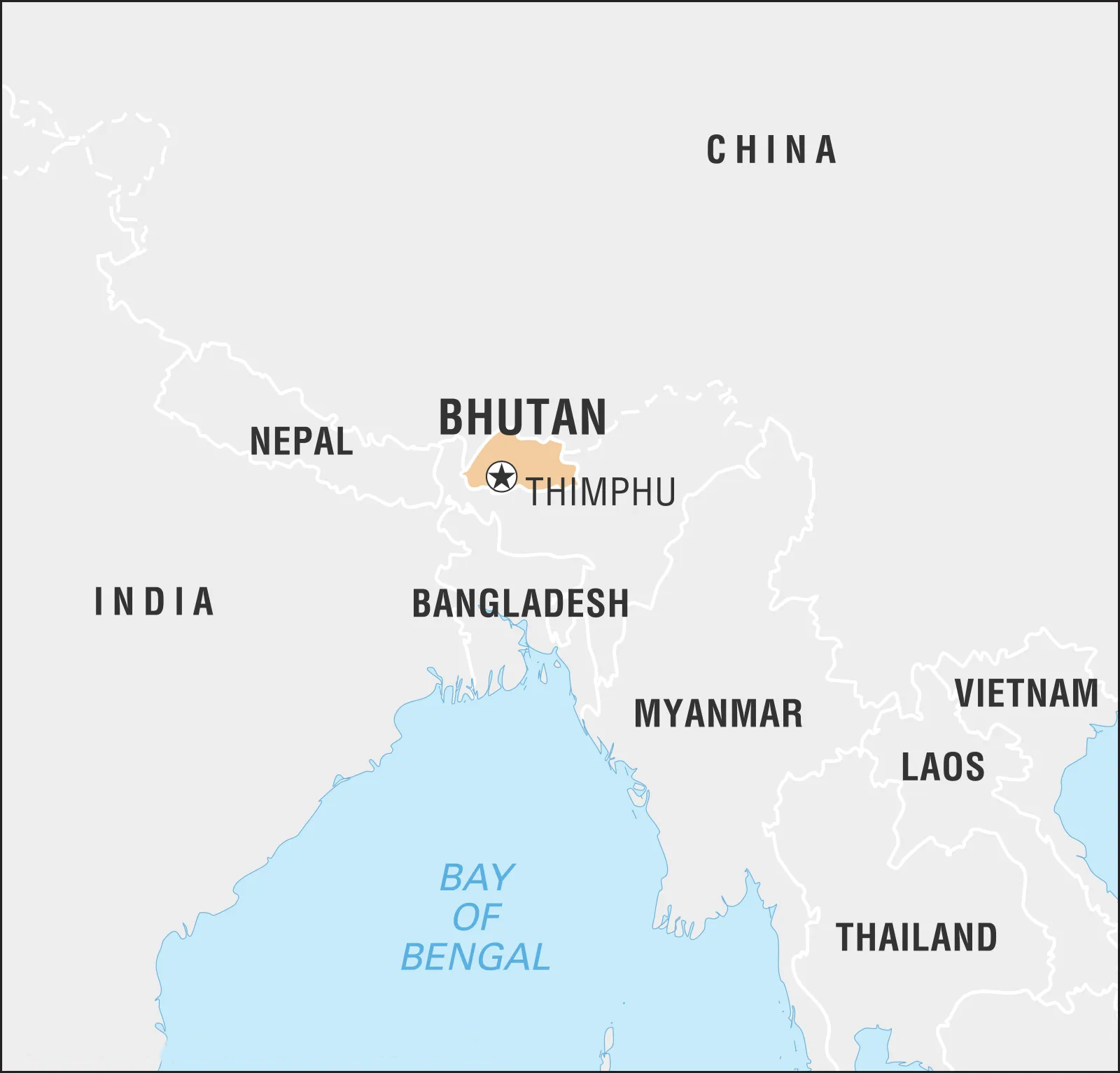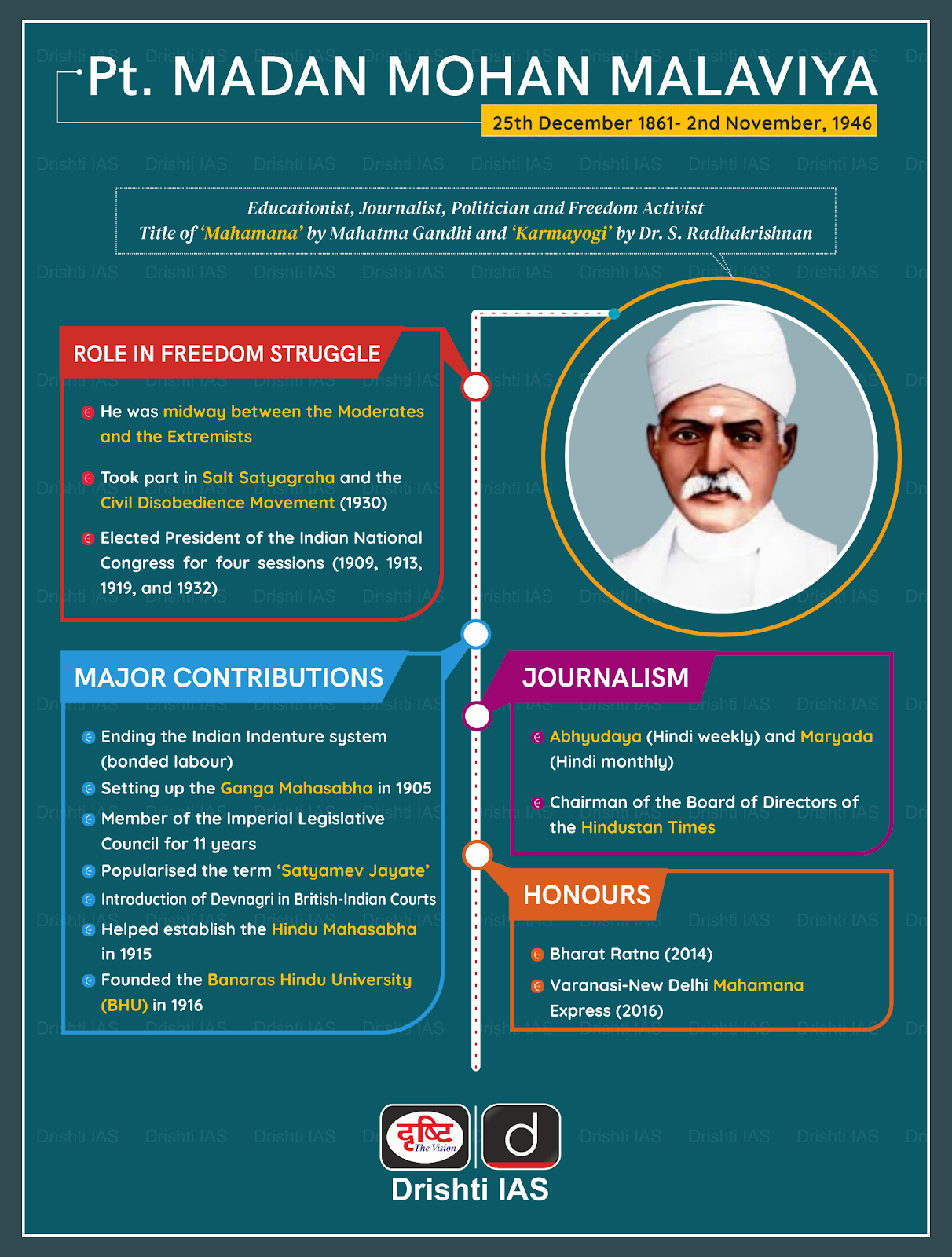International Relations
India-US Relations
For Prelims: India-US Relations, United Nations, G-20, Association of Southeast Asian Nations (ASEAN) Regional Forum, International Monetary Fund, World Bank, and World Trade Organization.
For Mains: India US relations - recent development, geopolitical challenges and way forward
Why in News?
Recently, the Prime Minister (PM) of India has stated that, despite occasional issues, India and the US have been on a positive trajectory in relations.
- The PM emphasized a deepening engagement, understanding, and friendship between the two nations, driven by national interest.
How have been India’s Relations with the US?
- About:
- The U.S.-India strategic partnership is founded on shared values including a commitment to democracy and upholding the rules-based international system.
- Both have shared interests in promoting global security, stability, and economic prosperity through trade, investment, and connectivity.
- Economic Relations:
- The U.S. has emerged as India's biggest trading partner in 2022-23 on account of increasing economic ties between the two countries.
- The bilateral trade between India and the U.S. has increased by 7.65% to USD 128.55 in 2022-23 as against USD 119.5 billion in 2021-22.
- Exports to the U.S. rose by 2.81% to USD 78.31 billion in 2022-23 as against USD 76.18 billion in 2021-22, while imports grew by about 16% to USD 50.24 billion.
- International Cooperations:
- India and the United States cooperate closely at multilateral organizations, including the United Nations, G-20, Association of Southeast Asian Nations (ASEAN) Regional Forum, International Monetary Fund, World Bank, and World Trade Organization.
- The United States welcomed India joining the UN Security Council in 2021 for a two-year term and supports a reformed UN Security Council that includes India as a permanent member.
- India is also one of twelve countries partnering with the United States on the Indo-Pacific Economic Framework for Prosperity (IPEF).
- India is a member of the Indian Ocean Rim Association (IORA), at which the United States is a dialogue partner.
- In 2021, the United States joined the International Solar Alliance headquartered in India, and in 2022 the United States Agency for International Development (USAID).
- Defence Cooperation:
- India has now signed all four foundational agreements with the US.
- The Logistics Exchange Memorandum of Agreement (LEMOA) in 2016,
- the Communications Compatibility and Security Agreement (COMCASA) in 2018,
- The Basic Exchange and Cooperation Agreement for Geo-Spatial cooperation (BECA) in 2020.
- While the General Security of Military Information Agreement (GSOMIA) was signed a long time ago, an extension to it, the Industrial Security Annex (ISA), was signed in 2019
- India, which could not access US weapons during the Cold War, has bought USD 20 billion worth of arms over the last two decades.
- However, the incentive for the US is helping India reduce its historical dependence on Russia for its military supplies.
- The armed forces of India and the US engage in extensive bilateral military exercises (Yuddha Abyas, Vajra Prahar) and minilateral ones with the four partners in the Quad Forum (Malabar).
- Another grouping in the Middle East - I2U2 involving India, Israel, UAE and the US is being termed as the new Quad.
- India has now signed all four foundational agreements with the US.
- Space and Science and Technology:
- Indian Space Research Organization (ISRO) and US National Aeronautics and Space Administration (NASA) are developing a microwave remote sensing satellite for Earth observation, NASA-ISRO Synthetic Aperture Radar (NISAR).
- In June 2023 ISRO signed with NASA the Artemis Accords to participate in peaceful and sustainable civil exploration of outer space.
- iCET is a joint initiative by the National Security Advisors of the US and India to foster cooperation and innovation in key technology domains such as AI, quantum, telecom, space, biotech, semiconductors, and defence. It was launched in January 2023.
What are the Major Challenges between India and the US?
- US Criticism of India’s Foreign Policy:
- If the Indian elite has long seen the world through the lens of non-alignment, alliance relationships have been at the heart of US’ foreign policy since the Second World War.
- India’s policy of nonalignment especially during the Cold War has always been a point of concern for the West, especially the US.
- After the 9/11 attacks, the US asked India to dispatch troops to Afghanistan; the Indian military vetoed the request.
- When the US invaded Iraq in 2003, even then India’s erstwhile PM withheld military support.
- Even today, India refuses to toe the American line on the Russian-Ukraine war and its import of cheap Russian oil continues to break records.
- Pro-US voices have often been raised demanding India to get “on the right side of history”.
- If the Indian elite has long seen the world through the lens of non-alignment, alliance relationships have been at the heart of US’ foreign policy since the Second World War.
- India’s Engagement with US Adversaries:
- India has criticised the US decision to block Iranian and Venezuelan oil from the open market.
- India has actively worked to bring Iran into the SCO (Shanghai Cooperation Organization).
- US’ Criticism of India’s Democracy:
- Various US organisations and foundations, from time to time, with the tacit support of some Congressmen and Senators, come out with reports questioning the present state of democratic discourse, press and religious freedom and condition of the minorities in India.
- Some of them include the International Religious Freedom Report 2023 and the Human Rights Report on India 2021 by the US State Department.
- Various US organisations and foundations, from time to time, with the tacit support of some Congressmen and Senators, come out with reports questioning the present state of democratic discourse, press and religious freedom and condition of the minorities in India.
- Economic Tensions:
- The Atmanirbhar Bharat Campaign has exacerbated the view in the US that India is increasingly becoming a protectionist closed market economy.
- Effective in June 2019, the USA decided to withdraw duty-free benefits to Indian exporters under the GSP (Generalized System of Preferences) programme affecting India's export-oriented sectors such as pharma, textiles, agri products and automotive parts.
Way Forward
- The partnership between the two countries is critical for ensuring a free, open, and rules-bound Indo-Pacific region.
- The unparalleled Demographic Dividend provides enormous opportunities for the US and Indian firms for technology transfer, manufacturing, trade and investment.
- India is emerging as a leading player in an international system that is undergoing an unprecedented transformation. It shall use its present situation to explore opportunities to further its vital interests.
UPSC Civil Services Examination, Previous Year Question (PYQ)
Q. ‘What introduces friction into the ties between India and the United States is that Washington is still unable to find for India a position in its global strategy, which would satisfy India’s National self-esteem and ambitions’. Explain with suitable examples. (2019)


Geography
Land of Fire and Ice: Iceland
For Prelims: Mid-Atlantic Ridge, Atlantic Ocean,Eyjafjallajökull, Oceanic crust,Tectonic Plates, Pacific Ring of Fire, Earth's subduction zones, Pacific Ocean, Kamchatka Peninsula, Southeast Asia, Himalayan Mountain system,Alps mountains, Mediterranean Sea, Aegean Sea, IAS, UPSC.
For Mains: Volcanoes and Its Worldwide Distribution
Why in News?
Recently, the Government of Iceland has confirmed that the volcanic eruption near the capital Reykjanes poses no threat to human life.
- Iceland is located on thes Mid-Atlantic Ridge, technically the longest mountain range in the world, but on the floor of the Atlantic Ocean.
- The eruption began between Sýlingarfell and Hagafell, just north of the fishing town of Grindavik which is located on the Reykjanes Peninsula.
What are the Key Facts about Iceland (Land of Fire and Ice)?
- Iceland is located on the Mid-Atlantic Ridge, technically the longest mountain range in the world, but on the floor of the Atlantic Ocean.
- The ridge separates the Eurasian and North American tectonic plates making it a hotbed of seismic activity. It is mostly a submarine, running along the length of the Atlantic from north to south.
- However, in the North Atlantic, it rises over the ocean surface in the form of the island of Iceland. This feature of its geology has given rise to Iceland’s unique landscape made up of geysers (hot springs), glaciers, mountains, volcanoes and lava fields.
- Iceland is home to 33 active volcanoes, the highest in Europe. This unique landscape has given Iceland the epithet, ‘Land of Fire and Ice’.
- Eyjafjallajökull, one of Iceland's most famous volcanoes, erupted in 2010, causing a widespread ash cloud.
- Other notable volcanoes include Hekla, Grímsvötn, Hóluhraun, and Litli-Hrútur, part of the Fagradalsfjall system.
- Eyjafjallajökull, one of Iceland's most famous volcanoes, erupted in 2010, causing a widespread ash cloud.
What are the Other Volcano-Prone Regions in the World?
- Volcanoes are distributed all around the world, mostly along the edges of Tectonic Plates, although there are intraplate volcanoes that form from mantle Hotspots .
- Circum-Pacific Belt:
- The Pacific "Ring of Fire" is a string of volcanoes and sites located on most of the Earth's subduction zones having high seismic activity, around the edges of the Pacific Ocean.
- The Pacific Ring of Fire has a total of 452 volcanoes.
- Most of the active volcanoes are found on its western edge, from the Kamchatka Peninsula in Russia, through the islands of Japan and Southeast Asia, to New Zealand.
- Mid-Continental Belt:
- This volcanic belt extends along the Alpine Mountain system of Europe, North America, through Asia Minor, Caucasia, Iran, Afghanistan and Pakistan to the Himalayan Mountain system, including Tibet, the pamir, Tien-Shan, Altai, and the mountains of China, Myanmar and eastern Siberia.
- This belt includes the volcanoes of Alps mountains, Mediterranean Sea (Stromboli, Vesuvius, Etna, etc.), volcanoes of Aegean Sea, Mt. Ararat (Turkey), Elburz, Hindu Kush and Himalayas.
- Mid Atlantic Ridge:
- The Mid-Atlantic Ridge separates the North and South American Plate from the Eurasian and African Plate.
- Magma rises through the cracks and leaks out onto the ocean floor like a long, thin, undersea volcano. As magma meets the water, it cools and solidifies, adding to the edges of the sideways-moving plates.
- This process along the divergent boundary has created the longest topographic feature in the form of Mid oceanic ridges under the Oceans of the world.
- Intraplate Volcanoes:
- The 5% of known volcanoes in the world that are not closely related to plate margins are generally regarded as intraplate, or “hot-spot,” volcanoes.
- A hot spot is believed to be related to the rising of a deep-mantle plume, which is caused by very slow convection of highly viscous material in Earth’s mantle.
- It can be represented by a single oceanic volcano or lines of volcanoes such as the Hawaiian-Emperor seamount chains.
- The 5% of known volcanoes in the world that are not closely related to plate margins are generally regarded as intraplate, or “hot-spot,” volcanoes.
UPSC Civil Services Examination, Previous Year Question
Prelims
Q. Consider the following statements: (2018)
- The Barren Island volcano is an active volcano located in the Indian territory.
- Barren Island lies about 140 km east of Great Nicobar.
- The last time the Barren Island volcano erupted was in 1991 and it has remained inactive since then.
Which of the statements given above is/are correct?
(a) 1 only
(b) 2 and 3
(c) 3 only
(d) 1 and 3
Ans: (a)
- Barren Island is India’s only active volcano which is located in the Andaman and Nicobar Islands. Hence, statement 1 is correct.
- It is located at about 140 km from Port Blair, southern part of Andaman Island in Andaman Sea. The distance between Barren Island to Great Nicobar is more than the given distance. Hence, statement 2 is not correct.
- First recorded eruption of the volcano dates back to 1787. In the past 100 years, it has erupted at least five times. Then for the next 100 years, it remained silent. It re-erupted massively in 1991.
- Since then, the eruption has been recorded every two-three years; the latest in the series was February 2016. Hence, statement 3 is not correct. Therefore, option (a) is the correct answer.
Mains
Q. Discuss the geophysical characteristics of Circum-Pacific Zone. (2020)
Q. Mention the global occurrence of volcanic eruptions in 2021 and their impact on the regional environment. (2021)


Governance
Suspension of Members of Parliament
For Prelims: Members of Parliament (MPs), Speaker of Lok Sabha, Chairman of Rajya Sabha , Rules of Procedure and Conduct of Business, Rule 374A, Rule 255, Rule 256
For Mains: Consequences of frequent suspension of Members of Parliament on Working of Democracy
Why in News?
Recently, 146 Members of Parliament (MPs) have been suspended during the winter session of Parliament 2023.
- MPs in both Houses faced suspension due to their disruption of Parliamentary proceedings in protest of the recent breach of security in Parliament.
Why do MPs disrupt Parliament?
- As per the analysis done by political leaders, and presiding officers there is four main causes that lead to disruption:
- MPs do not have enough time to raise crucial issues.
- The government's lack of responsiveness
- Parties intentionally cause disturbance for political or publicity reasons.
- The failure to take immediate action against MPs who interrupt parliamentary proceedings.
Who Can Suspend a Minister of Parliament?
- The general principle is that it is the role and duty of the Presiding Officer i.e., Speaker of Lok Sabha and Chairman of Rajya Sabha to maintain order so that the House can function smoothly.
- In order to ensure that proceedings are conducted in the proper manner, the Speaker/ Chairman is empowered to force a Member to withdraw from the House.
What are the Rules Under Which the Presiding Officer Suspends MPs?
- Rules of Procedure and Conduct of Business of Lok Sabha :
- Rule 373: Rules The Speaker can direct a member to withdraw immediately from the House if he finds the member's conduct disorderly.
- Members so ordered to withdraw shall do so forthwith and shall remain absent during the remainder of the day’s sitting.
- Rule 374: The Speaker can name a member who disregards the authority of the Chair or abuses the rules of the House by persistently and wilfully obstructing the business thereof.
- And the member so named will be suspended from the House for a period not exceeding the remainder of the session.
- A member suspended under this rule shall forthwith withdraw from the precincts of the House.”
- Rule 374A: Rule 374A was incorporated in the Rule Book in December 2001.
- In case of gross violation or severe charges, on being named by the Speaker, the member stands automatically suspended from the service of the House for five consecutive sittings or the remainder of the session, whichever is less.
- Rule 373: Rules The Speaker can direct a member to withdraw immediately from the House if he finds the member's conduct disorderly.
- Rules of Procedure and Conduct of Business of Rajya Sabha:
- Rule 255:
- The Chairman of Rajya Sabha is empowered under Rule 255 of its Rule Book to “direct any Member whose conduct is in his opinion grossly disorderly to withdraw immediately” from the House.
- Rule 256:
- Under this rule, the Chairman may “name a Member who disregards the authority of the Chair or abuses the rules of the Council by persistently and wilfully obstructing” business.
- In such a situation, the House may adopt a motion suspending the Member from the service of the House for a period not exceeding the remainder of the session.
- Rule 255:
What are the Drawbacks of the Suspension of MPs?
- The suspension of MPs in Parliament is a drastic measure that is taken to maintain the order and decorum of the House. However, it also has several disadvantages for the functioning of democracy, such as:
- It curbs the voice and representation of the people who elected the suspended MPs. It deprives them of their right to raise issues of public interest and hold the government accountable.
- It reduces the scope and quality of debate and discussion on important matters of legislation and policy.
- It undermines the role of the opposition as a constructive and responsible partner in the parliamentary process.
- It creates a trust deficit and animosity between the ruling and opposition parties.
- It erodes the spirit of cooperation and consensus-building that is essential for a healthy democracy.
- It sets a bad precedent and encourages the misuse of power by the majority party.
- It violates the norms and conventions of parliamentary democracy and weakens the institution of Parliament.
- The suspensions are a threat to the federal structure and the diversity of the country, as they affect MPs from different regions and parties.
Way Forward
- Ensuring that the government responds to the concerns and demands of the opposition in a timely and respectful manner, and avoids using suspension as a tool to suppress dissent or criticism.
- Strengthening the role and authority of the presiding officers to maintain order and discipline in the House, and imposing stricter penalties for MPs who violate the rules and norms of parliamentary conduct.
- Encouraging dialogue and consensus-building among different parties and groups on key issues, and avoiding confrontation and disruption as a means of protest or pressure.
- Enhancing the awareness and accountability of MPs towards their constitutional duties and responsibilities, and respecting the sanctity and dignity of the House.
UPSC Civil Services Examination Previous Year Question (PYQ)
Prelims
Q. Regarding the office of the Lok Sabha speaker, consider the following statements: (2012)
- He/She holds the office during the pleasure of the President.
- He/She need not be a member of the House at the time of his/her election but has to become a member of the House within six months from the date of his/her election.
- If he/she intends to resign, the letter of his/her resignation has to be addressed to the Deputy Speaker.
Which of the statements given above is/are correct?
(a) 1 and 2 only
(b) 3 only
(c) 1, 2 and 3
(d) None
Ans: (b)
Exp:
- The Speaker is elected by the members of Lok Sabha from amongst its members (as soon as may be, after its first sitting). Hence, statement 2 is not correct.
- Whenever the office of the Speaker falls vacant, the Lok Sabha elects another member to fill the vacancy. The date of election of the Speaker is fixed by the President. Usually, the Speaker remains in office during the life of the Lok Sabha. However, he has to vacate his office earlier in any of the following three cases:
- If he ceases to be a member of the Lok Sabha. if he resigns by writing to the Deputy Speaker; Hence, statement 3 is correct.
- If he is removed by a resolution passed by a majority of all the members of the Lok Sabha. Such a resolution can be moved only after giving 14 days advance notice. Hence, statement 1 is not correct. Therefore, option (b) is the correct answer.
Mains
Q. The Indian Constitution has provisions for holding joint session of the two houses of the Parliament. Enumerate the occasions when this would normally happen and also the occasions when it cannot, with reasons thereof. (2017)


Economy
China Bans Export of Rare Earth Technologies
For Prelims: China Bans Export of Rare Earth Technologies, Rare Earth Metals, Global supply chains, Periodic Table, Magnet production.
For Mains: China Bans Export of Rare Earth Technologies, Rare Earth Metals and the need to develop capabilities to increase its production in India.
Why in News?
Recently, China has banned the export of technology to extract and separate the Rare Earth Metals, as it overhauled a list of technologies deemed key to national security.
- It also banned the export of production technology for rare earth metals and alloy materials as well as technology to prepare some rare earth magnets.
- The move comes as Europe and the US scramble to wean themselves off rare earths from China, which accounts for 90% of global refined output.
What are Rare Earth Metals?
- They are a set of seventeen metallic elements. These include the fifteen lanthanides on the periodic table in addition to scandium and yttrium that show similar physical and chemical properties to the lanthanides.
- The 17 Rare Earths are cerium (Ce), dysprosium (Dy), erbium (Er), europium (Eu), gadolinium (Gd), holmium (Ho), lanthanum (La), lutetium (Lu), neodymium (Nd), praseodymium (Pr), promethium (Pm), samarium (Sm), scandium (Sc), terbium (Tb), thulium (Tm), ytterbium (Yb), and yttrium (Y).
- These minerals have unique magnetic, luminescent, and electrochemical properties and thus are used in many modern technologies, including consumer electronics, computers and networks, communications, health care, national defense, clean energy technologies etc.
- Even futuristic technologies need these REEs.
- For example, high-temperature superconductivity, safe storage and transport of hydrogen for a post-hydrocarbon economy etc.
- They are called 'rare earth' because earlier it was difficult to extract them from their oxides forms technologically.
- They occur in many minerals but typically in low concentrations to be refined in an economical manner.
What are the Global Implications of Banning Rare Earth Export Technology?
- Global Supply Chain Disruption:
- China is the world's top processor of rare earths. Given China's dominant role in rare earth production and processing, the ban could disrupt global supply chains for various industries reliant on these materials.
- Countries and industries heavily dependent on Chinese rare earth exports might face shortages or higher costs.
- Strategic Dependence:
- It underscores the vulnerability of countries heavily reliant on China for critical materials.
- Dependence on a single source for such essential elements raises concerns about supply security, pushing nations to explore alternative sources or domestic production.
- Opportunities for Innovation:
- The ban might spur innovation and investments in alternative technologies and supply sources outside China.
- Countries may seek to diversify their rare earth supply chains, reducing dependence on a single market.
How can it Impact India?
- Supply Chain Diversification:
- India, like many other countries, relies on Chinese rare earth exports. The ban presents an opportunity for India to reassess its dependence and explore diversification strategies.
- India may focus on developing domestic rare earth extraction and processing capabilities or seek partnerships with other nations to secure its supply.
- Industrial Impact:
- Industries in India relying on rare earth materials may face disruptions initially due to potential supply constraints.
- However, this could prompt investments in domestic production or collaborations with alternative suppliers to mitigate risks.
- The Rare Earth (RE) resources in India are reported to be the fifth largest in the world.
Way Forward
China's ban on rare earth technology exports highlights the criticality of diversifying global supply chains and the need for strategic planning by nations, including India, to secure essential resources for their industries and technological advancement.
UPSC Civil Services Examination, Previous Year Questions (PYQs)
Q. Recently, there has been a concern over the short supply of a group of elements called ‘rare earth metals. Why? (2012)
- China, which is the largest producer of these elements, has imposed some restrictions on their export.
- Other than China, Australia, Canada and Chile, these elements are not found in any country.
- Rare earth metals are essential for the manufacture of various kinds of electronic items and there is a growing demand for these elements.
Which of the statements given above is/are correct?
(a) 1 only
(b) 2 and 3 only
(c) 1 and 3 only
(d) 1, 2 and 3
Ans: (c)


Important Facts For Prelims
Namdapha Flying Squirrel
Why in News?
Recently, a Namdapha flying squirrel (Biswamoyopterus biswasi) has resurfaced in Arunachal Pradesh after going missing for 42 years.
- The Namdapha flying squirrel was last described in 1981 based on a single individual found in the Namdapha Tiger Reserve in Arunachal Pradesh’s Changlang district.
What is a Namdapha Flying Squirrel?
- About:
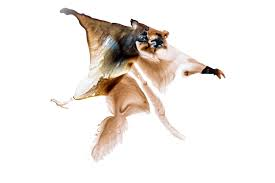
- It is a rare nocturnal flying squirrel species found in the Namdapha Tiger Reserve in Arunachal Pradesh, India.
- It is distinct from the red giant flying squirrel (Petaurista petaurista), another species in the same ecosystem, primarily due to the prominent tuft of hair on its ears.
- The difficulty in locating this species led to concerns that it might have been mistaken for the red giant flying squirrel or, worse, faced extinction.
- Threats:
- The Namdapha flying squirrel is presently threatened by habitat loss and degradation, caused by clear-felling for human settlements, shifting agriculture, and the extraction of non-timber forest products, particularly the leaves of a rattan palm, Zalacca secunda, for use as a roofing material.
- Protection Status:
- IUCN Red List: Critically Endangered
- Wildlife (Protection) Amendment Act, 2022: Schedule I
What are the Key Points About Namdapha Tiger Reserve?
- About:
- Namdapha Tiger Reserve was declared in 1983 as the 15th Tiger Project of the country.
- It was declared a Wildlife Sanctuary in 1972, then a National Park in 1983 and became a Tiger Reserve under the Project Tiger scheme in the same year.
- Namdapha is in fact the name of a river which originates from Daphabum (Dapha is the name of hill, Bum means peak of hill) and meets Noa-Dehing river. This river flows right across in a North-South direction of the National Park and hence the name Namdapha has been given.
- It is located in Arunachal Pradesh. The park is located between the Dapha bum range of the Mishmi Hills and the Patkai range.
- Namdapha Tiger Reserve was declared in 1983 as the 15th Tiger Project of the country.
- Climate:
- Enjoys the sub-tropical climate. The mountainous part has a mountain type of climate while the low-lying plains and valleys experience tropical climate.
UPSC Civil Services Examination Previous Year Question (PYQ)
Q1. Which one of the following National Parks has a climate that varies from tropical to subtropical, temperate and arctic? (2015)
(a) Khangchendzonga National Park
(b) Nandadevi National Park
(c) Neora Valley National Park
(d) Namdapha National Park
Ans: (d)
Q2. Consider the following pairs: (2013)
- Nokrek Biosphere Reserve: Garo Hills
- Logtak (Loktak) Lake: Barail Range
- Namdapha National Park: Dafla Hills
Which of the above pairs is/are correctly matched?
(a) 1 only
(b) 2 and 3 only
(c) 1, 2 and 3
(d) None
Ans: (a)
Exp:
- Nokrek Biosphere Reserve is located near Tura Peak in West Garo Hills district of Meghalaya, India. Nokrek has a remnant population of the Red Panda and is also an important habitat of the Asian Elephants. Hence, pair 1 is correctly matched.
- Loktak Lake is the largest freshwater (sweet) lake in North-East India, also called the only floating lake in the world due to the floating phumdis (heterogeneous mass of vegetation, soil, and organic matter at various stages of decomposition) on it, is located near Moirang in Manipur State, India. Hence, pair 2 is not correctly matched.
- Barail is the highest hill range in Assam and it separates the State of Manipur from the State of Nagaland.
- Namdapha National Park is the largest protected area in the Eastern Himalaya biodiversity hotspot and is located in Arunachal Pradesh in Northeast India. It is also the third largest national park in India in terms of area. It is located between the Dapha Bum range of the Mishmi Hills and the Patkai range. Hence, pair 3 is not correctly matched.
- Therefore, option (a) is the correct answer.


Important Facts For Prelims
Gelephu Smart City Project
Why In News?
Recently, Bhutan’s King has announced plans to build a massive “international city” in an area of over 1,000 sq. km. on its border with Assam. This project is known as the Gelephu Project.
What are the Key Highlights of the Gelephu Smart City Project?
- The project is expected to be an “economic corridor connecting South Asia with Southeast Asia via India’s northeastern States”.
- The city is expected to follow environmental standards and sustainability as a goal, and will aim to attract “quality investment” from “specially screened” international companies.
- The project is expected to include “zero emission” industries, a “mindfulness city” that plays to Bhutan’s strength in tourism and wellness, as well as infrastructure companies.
- The project is expected to be a “Special Administrative Region” that would be run under different laws to facilitate more international investment.
- The project is expected to be a “point of inflection” and “transformation” for Bhutan and South Asia.
- The Government of India agrees to construct the first India-Bhutan railway line to Gelephu.
- The railway will also connect with roadways and border trading points into Assam and West Bengal, eventually providing Bhutan access to Myanmar, Thailand, Cambodia, and Singapore.
What are the Key Facts Related to Bhutan?
- About:
- Bhutan is nestled between India and Tibet, an autonomous region of China.
- and is a landlocked country.
- Thimphu is the Capital City of Butan.
- Bhutan became a democratic country in 2008 after the first democratic elections were held in the country. The King of Bhutan is the Head of State.
- River:
- The main rivers from west to east are the Torsa (Amo), Wong (Raidak), Sankosh (Mo), and Manas. All the rivers flow southward from the Great Himalayas and join the Brahmaputra River in India.
- The longest river in Bhutan is the Manas River.
- The Manas River is a transboundary river in the Himalayan foothills between southern Bhutan and India.
- Government:
- Constitutional monarchy.


Important Facts For Prelims
Supreme Court's Remarkable Case Disposal Surge in 2023
Why in News?
In a notable development, the Supreme Court(SC) of India has disclosed a substantial increase in the disposal of cases during the year 2023, surpassing the number of cases registered during the same period.
What are the Factors that Contributed to the High Disposal of Cases?
- The SC disposed of 52,191 cases between January 1 and December 15, 2023, compared to 49,191 cases registered during the same period.
- The Integrated Case Management Information System (ICMIS), implemented in 2017, played a crucial role in achieving the highest disposal numbers.
- The Chief Justice of India streamlined the filing-to-listing timeframe, ensuring cases were listed within five days, compared to the previous 10-day requirement.
- Matters related to bail, habeas corpus, demolition, and anticipatory bail were processed within a day and promptly listed in courts, prioritizing the right to liberty.
- Special Benches were constituted, including those dealing with the death penalty.
What is Integrated Case Management Information System (ICMIS)?
- ICMIS is a next-generation hybrid database adopted by the SC. It integrates various information sources related to cases, such as case status, orders, judgments, appeals, etc.
- ICMIS enables litigants to access and retrieve information online through a user-friendly interface. It also provides real-time updates on the progress of cases.
- ICMIS helps reduce manipulation and delay in case filing and disposal. It also facilitates the online filing of cases and documents through e-filing portals.
What are the Other Initiatives Related to Reduce Pendency of Cases?
- e-Courts:
- The Government of India has initiated the e-Courts Integrated Mission Mode Project to computerize District and subordinate courts, enhancing access to justice through technology.
- Launched in 2007 as part of the National e-Governance Plan, it collaborates with the e-Committee Supreme Court of India and the Department of Justice.
- The project progressed in two phases, with Phase I from 2011-2015 and Phase II starting in 2015, focusing on the computerization of District and Subordinate courts.
- The Government of India has initiated the e-Courts Integrated Mission Mode Project to computerize District and subordinate courts, enhancing access to justice through technology.
- Fast Track Special Courts (FTSCs):
- FTSCs were established to expedite trials for sexual offenses, especially those under the Protection of Children from Sexual Offences Act (POCSO Act), addressing delays in regular courts.
- Enacted through the Criminal Law (Amendment) Act in 2018, operates under the Department of Justice, Ministry of Law & Justice.
- FTSCs were established to expedite trials for sexual offenses, especially those under the Protection of Children from Sexual Offences Act (POCSO Act), addressing delays in regular courts.
- Supreme Court Portal for Assistance in Court’s Efficiency (SUPACE):
- SUPACE, a tool designed for judges, functions as a fact and law collection system, providing relevant information for decision-making. While it doesn't make decisions itself, it processes facts for judges seeking input in decision-making.
UPSC Civil Services Examination, Previous Year Questions (PYQs)
Prelims
Q. With reference to the Indian judiciary, consider the following statements: (2021)
- Any retired judge of the Supreme Court of India can be called back to sit and act as a Supreme Court judge by the Chief Justice of India with the prior permission of the President of India.
- A High Court in India has the power to review its own judgement as the Supreme Court does.
Which of the statements given above is/are correct?
(a) 1 only
(b) 2 only
(c) Both 1 and 2
(d) Neither I nor 2
Ans: (c)


Rapid Fire
National Consumer Rights Day
India celebrates National Consumer Rights Day on 24th December every year to raise awareness about consumer rights and responsibilities.
- The day commemorates the day when the Consumer Protection Act 1986 received the President's assent on December 24, 1986.
- The Act aims to protect consumers from defective goods, negligent services, and unfair trade practices.
- The six fundamental rights of the Consumer Protection Act are the Right to safety, the Right to choose, the Right to be informed, the Right to be heard, the Right to seek redressal and the Right to consumer education.
- The Consumer Protection Act, 2019 was passed by the Parliament to replace the Consumer Protection Act, 1986.
- The World Consumer Rights Day is observed on 15 March.
Read more: National Consumer Day, Safeguarding the Rights of Consumers


Rapid Fire
Pandit Madan Mohan Malaviya Birth Anniversary
On the 162nd birth anniversary of Pandit Madan Mohan Malaviya on 25th December 2023, the Prime Minister is scheduled to release the first series of the 'Collected Works of Pandit Madan Mohan Malaviya.'
- The bilingual (English and Hindi) work features writings, speeches, unpublished letters, and other works of Madan Mohan Malaviya.
- Madan Mohan Malaviya (25th December 1861 - 2nd November 1946) was an Indian scholar, politician, and educational reformer.
- He was a leader in the Indian independence movement and served as president of the Indian National Congress four times. He was also the founder of the Akhil Bharat Hindu Mahasabha and the Banaras Hindu University.
Read more: Pt. Madan Mohan Malaviya


Rapid Fire
Veer Bal Diwas
On 9th January 2022, the day of the Prakash Purab of Sri Guru Gobind Singh Ji, the Prime Minister announced that every year 26th December will be observed as ‘Veer Bal Diwas’, to mark the martyrdom of Sri Guru Gobind Singh’s younger sons Sahibzadas Baba Zorawar Singh Ji and Baba Fateh Singh Ji.
- Zorawar Singh and Fateh Singh were captured by the Mughals and were taken to Sirhind, where they refused to convert to Islam. Consequently, the faujdar of Sirhind had them executed on 13th December 1705.
- Earlier, the two elder sons of Guru Gobind Singh ji – Sahibzada Ajit Singh and Sahibzada Jujhar Singh sacrificed their lives on 7th December 1705, in the battle of Chamkaur where a small number of Sikhs fought the huge army of the Mughals and the hill kings.
- Guru Gobind Singh's four sons sacrificed their lives for the cause of Sikhism and their courage inspired generations of Sikhs.
Read More: Veer Bal Diwas



